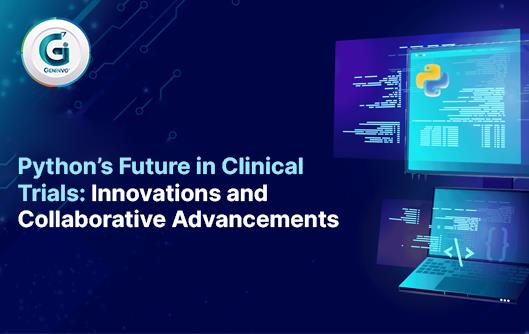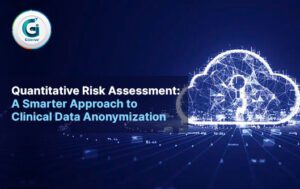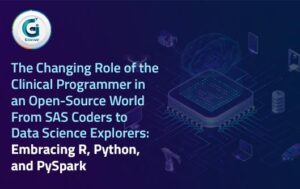Clinical trials are at the heart of life-saving medical discoveries. But behind these innovations lies a vast amount of complex data—and working with that data is no small task. From reviewing lengthy clinical protocols to extracting meaningful insights from regulatory documents, clinical research teams face growing pressure to automate, streamline, and scale.
This is where Python steps in. Known for its simplicity, flexibility, and powerful ecosystem, Python is quietly transforming the way clinical trials are conducted. Whether it’s extracting key insights from unstructured documents or generating synthetic data for model training, Python is proving to be a game-changer for modern pharma.
This blog explores how Python is shaping the future of clinical trials—from natural language processing to document automation and synthetic data generation and how its helping researchers work smarter, faster, and more collaboratively than ever before.
The Push for Open-Source and Automation in Pharma
Open-source is not just a trend—it is a movement. In clinical trials, it offers transparency, reproducibility, and collaboration. Organizations are embracing open-source ecosystems to keep pace with evolving data demands, tapping into faster development cycles and a vibrant community.
Over the last decade, there’s been a noticeable shift in programming preferences within life sciences. While SAS remains dominant due to its regulatory legacy, the rise of Python and R has opened new possibilities for advanced analytics and machine learning.
Python, as a community-driven language, brings flexibility, scalability, and collaboration—all of which are critical in today’s fast-moving clinical environment.
Python’s open ecosystem provides thousands of libraries tailor-made for:
- Data cleaning (pandas, numpy)
- Machine learning (scikit-learn, xgboost)
- Natural language processing (spaCy, transformers)
- Document automation (PyMuPDF, python-docx)
Python helps overcome some of the most pressing challenges in clinical trials using above mentioned libraries:
- Manual data extraction and formatting from PDFs and Word files
- Lack of reproducibility in legacy programming
- Time-consuming synthetic dataset creation for testing and development
By tapping into Python’s growing open-source ecosystem, pharma teams can now do in days what once took weeks—while improving quality, compliance, and traceability.
Turning Clinical Documents into Actionable Data with Python and NLP
Clinical trial documents—like protocols, investigator brochures, and medical narratives—are often hundreds of pages long, rich in content but poor in structure. Extracting meaningful insights from these unstructured files is time-consuming and prone to human error. Python is changing this landscape through a powerful combination of document automation and natural language processing (NLP).
Using libraries like PyMuPDF and pdfplumber, clinical teams can parse PDFs to extract structured tables (e.g., visit schedules, dosing regimens), while python-docx enables parsing of Word-based documents such as statistical analysis plans (SAPs) or clinical study reports (CSRs). These tools convert static documents into analysable formats like data frames, enabling automation across the regulatory workflow.
But the real power comes when combining this with NLP. Libraries like spaCy, transformers (Hugging Face), and nltk allow you to extract and classify key clinical concepts, such as:
- Inclusion/exclusion criteria
- Adverse events and causality assessments
- Endpoint definitions
- Protocol deviations
For example, a 150-page protocol can be automatically scanned to identify eligibility criteria and extract them into a structured format in minutes—making manual review faster and traceable.
Together, Python’s document-handling and NLP capabilities empower clinical research teams to:
- Automate repetitive reviews
- Minimize human error
- Improve traceability and reproducibility
- Accelerate the clinical trial pipeline
Generating Synthetic Clinical Data: Smarter Testing with Python
One of the biggest bottlenecks in clinical programming and biostatistics is the lack of meaningful test data. Generating realistic datasets manually is both time-consuming and error-prone. Python enables the creation of synthetic datasets that mirror real-world conditions—without exposing patient data.
Why Synthetic Data Matters:
- Privacy: No need to access sensitive patient information
- Scalability: Create data for hundreds of test scenarios instantly
- Consistency: Reduce testing errors and improve automation outcomes
Using libraries like Faker, Python allows teams to simulate realistic patient populations, adverse events, and treatment arms. This data can be used to test statistical programs, validate dashboards, and even train machine learning models.
Faker and Beyond: Python’s Flexibility
Libraries like Faker allow teams to quickly simulate patient names, addresses, dates, and even ICD codes or drug names using custom providers. However, Faker is only a starting point.
Python enables building custom tools that go much further:
- Clinical Logic Simulation: Inject domain rules (e.g., diabetes patients should not be assigned metformin and insulin glargine if trial criteria exclude that combo).
- Time-Series Event Simulation: Simulate a patient timeline with enrollment, multiple visits, labs, dosing events, and adverse events—all in realistic sequences.
- Synthetic Biomarkers or Genomic Data: Use statistical distributions or machine learning models to simulate patient biomarkers, gene expression levels, or even omics profiles.
- Interconnected Tables: Automatically generate SDTM-like or ADaM-like datasets with relational consistency (e.g., matching subject IDs across domains, derived variables aligned with study designs).
- Reusability & Automation: Create synthetic data generators as reusable components that integrate with test pipelines (e.g., pytest, CI/CD).
| Purpose | Library | Description |
| Statistical simulations | numpy, scipy, pandas | Generate distributions and structured data |
| Biological data generation | scikit-bio, Biopython, pysynbio | Simulate sequence and omics data |
| ML-based generation | scikit-learn, XGBoost, pytorch, spaCy, scispaCy, MedSpaC, tensorflow, BioGPT , Bert and ClinicalBERT | Generate data using trained generative models |
| Synthetic tabular data | SDV (Synthetic Data Vault) | Advanced library for learning real data structure and synthesizing new samples |
Conclusion: A Python-Powered Future for Clinical Trials
Python is more than a programming language—it’s a platform for transformation. From unlocking insights buried in PDFs to generating high-quality synthetic datasets, Python is helping us reimagine how clinical trials are planned, executed, and analysed.
As the industry embraces open-source, automation, and ethical AI, Python will continue to lead the way—empowering teams to solve today’s challenges and build a better future for clinical research.
As document volume grows and regulatory expectations tighten, these tools are not just convenient—they are essential.


























